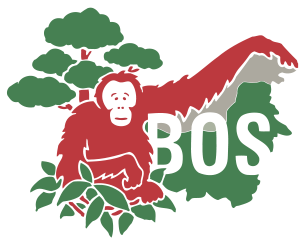Red alert: conservationists name 25 primates most at risk
Red alert: conservationists name 25 primates most at risk
Times online: February 18, 2010: Chris Smyth

(Top-Pics TNK/Alamy).
The Sumatran orang-utan, one of only two species of the ape, is now found in the wild only at the northern tip of the Indonesian island, where about 6,600 remain.
Gorillas, orang-utans and a cyanide-eating lemur are among the world’s 25 most critically endangered primates, scientists have said.
Almost half of the world’s primate species are in danger of extinction, according to the Red List drawn up by the International Union for Conservation of Nature.
Deforestation and hunting have pushed some of mankind’s closest relatives to the brink, with some species down to their last few dozen animals. Of the world’s 634 species of primates, 48 per cent are threatened with extinction, but researchers want attention focused on the 25 most critically endangered.
These include the Cross River gorilla, confined to the hills of the Cameroon-Nigeria border. It is thought that fewer than 300 remain, as farmers clear the forests where they live. Also listed is the Sumatran orang-utan, one of only two species of the ape, now found in the wild only at the northern tip of the Indonesian island, where about 6,600 remain.
Many of the most endangered primates are unique to the island of Madagascar, among them the greater bamboo lemur, numbering little more than a hundred individuals. The species eats only giant bamboo, which contains high levels of cyanide — meaning the lemur theoretically ingests enough of the poison every day to kill it. How it survives is a mystery.
“They seem to have a way of avoiding the effects of the cyanide,” said Christoph Schwitzer, of the Bristol Conservation and Science Foundation, and one of the editors of the report Primates in Peril. “We reckon it’s eating earth, which binds the cyanide into a compound which makes it harmless to the respiratory system. But it needs more research.”
The lemurs cope with poison but are being wiped out by slash-and-burn farming and illegal logging. Also endangered on the island is the Sclater’s black lemur, the only primate other than human beings to have blue eyes.
“The biggest threat to most primates is destruction of forests,” Dr Schwitzer said. “In Madagascar it’s subsistence agriculture, in Asia it’s palm oil plantations, in South America it’s illegal logging. What needs to be done is habitat protection.”
The variegated spider monkey faces a different problem: it lives in a small patch of Colombia controlled by the Farc rebel group. This has prevented conservationists getting near it — even as its habitat is lost to drug cultivation.
Several Asian animals are threatened by use in traditional medicines. These include the Javan slow loris and the golden-headed langur, which is confined to Cat Ba, a small island in the Gulf of Tonkin, Vietnam. Only about 60 or 70 remain. But the smallest numbers do not necessarily mean most endangered. “A hundred to two or three thousand doesn’t make that much of a difference. One natural catastrophe can wipe them out,” Dr Schwitzer said.
The speed at which habitats are disappearing and the absence of conservation were taken into account in drawing up the list. Russell Mittermeier, president of Conservation International, said: “Our Top 25 list is to attract the attention of the public, to stimulate governments to do more, and to find the resources to implement conservation measures.”
Conservation success in Brazil has meant the black lion tamarin and golden lion tamarin being removed from critically endangered lists.




